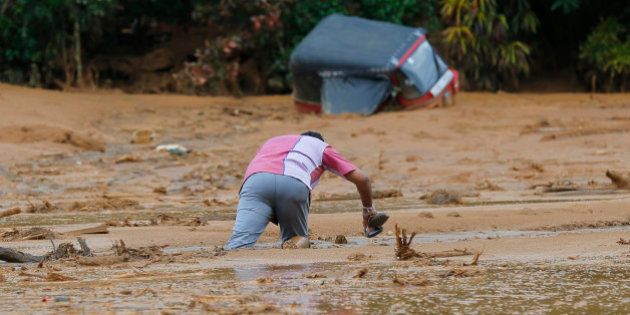
ARANAYAKA, Sri Lanka -- Hopes faded on Thursday for the survival of about 150 people trapped under the mud and rubble of two landslides in Sri Lanka, as heavy rain hampered rescue operations and the death toll from the disaster rose to 41.
Days of torrential rains have forced more than 300,000 people from their homes across the South Asian island nation, official data showed. Eighteen bodies have been retrieved at the landslide sites.
That figure is likely to rise sharply, as authorities battling muddy conditions began to give up hope of reaching 134 people believed to be trapped under rubble at one site, and 16 at another, before time ran out.
"I don't think there will be any survivors," Major General Sudantha Ranasinghe, the officer in charge of the rescue operation, told Reuters.
"There are places where the mud level is up to 30 feet. We will do our best. We will keep going until we can recover the maximum."
Rescue efforts have focused on the town of Aranayaka, 100 km northeast of the capital, Colombo, where three villages were buried late on Tuesday in the central district of Kegalle.
Military officials used hoes and shovels to shift mud as they scrambled in the hilly terrain to find survivors amid heavy rain that made walking difficult.
Material from destroyed homes littered the area, where dog cages, water tanks, and a three-wheeler were swathed in mud.
The military pulled three bodies from rubble at the site of the second landslide that buried 16 people, Ranasinghe said.
Aid agencies in Colombo canvassed for boats to rescue hundreds of people trapped by rising waters near the banks of rivers.
Disaster management authorities said the 3,00,000 people displaced across the country by the disaster had been sent to 610 safe locations.
Troops used boats and helicopters in rescue operations elsewhere, as the torrential rains since Sunday have caused floods and landslides in nineteen of the country's 25 districts.
Flooding and drought are cyclical in Sri Lanka, which is battered by a southern monsoon between May and September, while a northeastern monsoon runs from December to February.
